Which wide-angle lens to choose?
Last update: 05/13/2024
Our blog continues to grow thanks to you, our readers. This post may contain affiliate links, which means we can earn a small commission if you make a purchase through them, at no extra cost to you. This helps us to continue to bring you more and support our work!
More and more people nowadays are practicing digital photography. It must be said that the price of entry-level DSLRs has dropped so much in recent years that buying this type of camera as almost become affordable as a Christmas or a birthday present. After getting your first DSLR, in addition to buying camera accessories (tripod, filter, etc.), you will often consider the idea of getting a new lens. Among the first questions that come to mind: which wide-angle lens should I choose? Is there a best wide-angle for me?
Indeed, with the telephoto lens that captures details from a distance, the wide-angle or the ultra wide-angle lens is often considered as the first additional photographic equipment. Fisheye lenses also exist. However, choosing such a lens can be a bit complicated and many aspects must be taken into consideration before deciding to buy one. I myself am in the middle of a dilemma of finding the right wide-angle lens that I would like to buy in the near future. My shortest focal length is 24mm (on a Full Frame sensor) and I have to say that it is no longer suitable for me. I often want it to be wider, especially for landscape photography. If you are passionate about photography, don’t hesitate to have a look at the guide I wrote on how to choose the best DSLR.
Remember that buying a wide-angle lens will not make you a good photographer or a professional photographer. Learning how to photograph and take pictures with it is something else and I will tell you about it in a future article. In this post, I will introduce you to the benefits of a wide-angle lens, followed-by the technical elements to consider when buying one. I conclude with my recommendations based on several different criteria, including the budget, your practices and the type of sensor you have. This article is only for wide-angle lenses for DSLR camera. For Canon camera owners, I suggest you read the detailed guide to the best Canon wide-angle lens. Here is also the one on Nikon wide-angles lenses.

As Amazon Associates, we earn from qualifying purchases. It means that, all the links linking to camera gear in this post are redirecting to Amazon stores
What is a wide-angle lens and why should you use it?
Let’s just start with the basics. What exactly is a wide-angle lens? A wide-angle lens is defined by its focal length that is less than 24mm on a full-format camera (24×36) and about 18mm (or shorter) on an APS-C body. As a reminder, there is a crop factor between the two main body types on DSLRs. This is an important point to consider when making your choice. I will discuss it further below. You’re going to say, what’s the point of having a short focal length like this? Well, it will firstly allow you to add more elements into your picture and obtain an impression of immensity of your scene (larger angle of view).
It’s not for nothing that most landscape photographers take pictures with wide-angle lenses. The perspectives are “increased” with a wide angle compared to a standard 24-70mm lens. Wide-angle lenses also tend to “exaggerate/emphasize” perspectives and make it appear so that objects between different levels are really far apart. If you stand at the edge of a subject close to you, you will see it appear distorted and large compared to the rest of your image which gives you deeper effects. In some types of photography, it is clearly better to use a wide-angle lens to get a larger angle of view. Landscape photography is one of the main ones, but also architecture or photo reportage.


Landscape and architectural photography, two domains where a wide-angle lens is very useful
A few key points to note as well. The wide-angle lens clearly deforms objects close to the lens. For example, try taking pictures of a friend from 40cm away with your wide-angle lens, you’re sure to have a laugh. That’s why wide-angle aren’t used as a portrait-lens! Furthermore, special attention should be paid to the elements that you place in the foreground and at a distance from them. Ultra wide-angle lenses (e. g. 11mm focal length in APS-C or 16mm focal length in Full Frame) will be even more likely to distort the elements and special techniques must be used to avoid ending up with completely distorted elements (tree, house, etc.).
How to choose a wide-angle lens?
We get to the heart of the matter, how are we going to choose our wide-angle lens, apart from the notion of budget… because you’re certainly not wealthy, are you? More seriously though, there is a good chance that it is the budget that is holding you back more than anything else, but I do not mention it as one of the elements to be considered. I’m purely giving you tips from a technical aspect. Everyone will finalize their choice according to their budget!
Full frame sensor or APS-C sensor?
In my opinion, this is the most important aspect when choosing your wide-angle lens. Why? Simply because almost all the lenses made for an APS-C camera (e. g. Canon Eos 7D) cannot be placed on a full frame camera (e. g. 5d mark series). The opposite will always be true. If you are new to photography, there is a good chance that you started with an APS-C body. Remember that the focal length values given on the lenses are always indicated for a Full Frame body. There is in fact a conversion factor between the two types of bodies, on average 1.5x. Basically, if you buy a Canon 16-35mm wide-angle lens (EF lens build for Full frame sensor), and place it on an APS-C body, you actually get the equivalent of a 24-52mm focal length, which is not really a wide angle anymore. The purpose of this article is not to explain in detail the difference between the two types of sensors (we will come to that one day), the idea is simply to let you know that some wide-angle lenses won’t fit on some sensors. It would be a shame to buy a 500$ wide-angle lens that you can’t put on your body, right? If you don’t know what type of sensor you bought, just type the name of your camera online and you should find what you are looking for. The instructions for your camera also have it.
The evolution of your equipment in the future
A brief aside before moving on. Ask yourself if you are considering a switch to Full Frame, i.e. changing your camera body? If so, it may be wiser to invest a bit more in your next wide-angle lens so that it is directly compatible with your next camera. If you are not planning any changes, you can still purchase a wide-angle lens for APS-C without any trouble. Everything will then depend essentially on your budget and your needs. Be careful, however, to think carefully about the elements mentioned below concerning the conversion factor. If you are sure that you’re not switching to Full Frame, you can buy a wide-angle lens suitable for the APS-C directly (e. g. the excellent Canon 10-22 mm).
The maximum aperture of your wide-angle lens
Once you have identified the type of body and the potential evolution of your camera body, you can look at the purely technical aspects. Let’s start with the maximum aperture of your future lens. This is the “f/” noted on the lens. Is it important for a wide-angle lens? Everyone will have his or her own personal opinion on the matter, I’ll give you mine. I would say that everything depends on your purpose. If you only use your wide-angle lens in landscape photography, it seems less important at first, because you rarely shoot wide open. You’ll probably use between f/11 and f/14. The question is especially relevant if you are using your lens for example in reportage, for wedding photography indoors, when you travel, in any low light situation. If you are a beginner, I remind you that having a lens with a wide aperture (“bright lens”) mainly allows two things: taking pictures faster (faster shutter speed) and blurring your background. You may find yourself in many such situations:

- Lack of brightness: Remember that aperture and shutter speed are related. If you can open at f/2.8 instead of f/4, you can shoot your picture twice as fast, which is not nothing. To mention just a few examples where a wide aperture is necessary on a wide-angle lens: concert photography, indoor wedding, indoor reportage (markets, dark rooms, etc.). Being able to gain a stop of speed will allow you to take more handheld pictures….
- Desire to blur the background: You should also know that the wider the aperture of your camera lens (small f/), the more you are able to blur the background of your picture and get a nice bokeh (background blur/out of focus area). You can also play even more on the depth of field. This will be particularly useful for night photography, stars, and even in reportage photography where we often want to isolate and highlight a subject close to us. If the background isn’t very nice, you might as well blur it, right?
As you’ve understood, everything will depend on your priorities and photography needs. It is not for nothing that a f/4 max. aperture lens is often half as expensive as a f/2.8 max. aperture lens. However, if you have the budget, I’d advise for you to go for it…
Choose a fixed focal length lens or a wide-angle zoom?
This is another great discussion among amateur and professional photographers, choosing a fixed focal length or a zoom focal length. Everyone will have their preferences. Indeed, some people prefer to walk to find their place to shoot and improve their composition. To sum up, we could say that prime lenses are often lighter, brighter (f/ smaller) and generally cheaper, allowing more beautiful blurred images but requiring you to move to get the composition you want. This often forces you to have to think about your picture and you improve by doing this… On the other hand, zoom lenses are more versatile. It does not require the need to move around and offers you faster composition possibilities. But then again, you “don’t think” about your picture as much in my opinion.
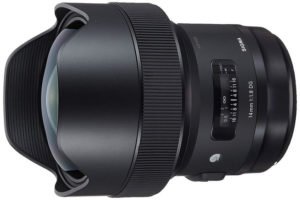
The Sigma 14mm f/1.8, a great example of a fixed focal length wide-angle lens – More details on Amazon
Weight, an essential element?
A brief look at the weight of your wide-angle lens. Depending on the kind of usage you are going to make of it, this is a point to consider. Are you going to travel a lot with it? Go hiking for several days? If you are only going to use it on holidays or weekends close to home or for wedding photography, I’m of the opinion that it is less important overall. It’s for you to judge if the weight difference is really that important to you?
Manual / Automatic focus
This is maybe just a detail, but I had to mention it. Almost all the wide-angle lenses of the major brands (Canon, Nikon, Sigma, Tamron) have automatic autofocus (which means they can focus automatically on whatever you want). Some brands (Zeiss or Samyang in particular) offer excellent wide-angle lenses with manual focusing. Be careful to check before you make your purchase though.
The system and price of the filters to use
Last but not least, in my opinion (and I’m pulling my hair out about this), the choice of the filter system. If you buy a wide-angle lens, there is a good chance that it will be for landscape photography. When it comes to landscapes, you will very often choose to use camera lens filters (full article on the subject). Depending on your photography practice (and if you’re like me and many others), you will prefer to spend time behind your camera rather than behind a computer, right? You should know that there are several types of filter systems depending on the lens you are going to choose. You can have a simple system (a screw filter or a filter holder as you wish) or, if the lens has a curved front element, a special expensive system that allows you to place polarizing filters or ND filters for instance. Would you like to learn more about filter holders for wide-angle lenses? Right this way!

The renowned filter holder system for the Canon 14mm L IS. An adapted but expensive system – More details on Amazon
Some lenses therefore leave you no other option for the filter system and this can become quite expensive. So be careful to take a good look at this point, especially if (like me) you have already purchased a filter system. Other details must be considered when choosing your wide angle (chromatic aberration, vignetting, sharpness, etc.). I won’t go into the technical details of each lens, but you can find them by comparing the lenses on the dxo website.
Which wide-angle lens to choose after all?
At the end of this article, I give you my recommendations for the acquisition of your wide-angle lens. If you are looking for accurate testing on the performance of your future wide-angle lens, you can refer to the Bible on the subject: dxomark. I try to classify my recommendations by budget, type of sensor and brands. The article will be updated regularly as new releases are made.
You will find below my main recommendations in terms of lenses for both APS-C camera (native and third-party brands) and Full Frame sensors (native and third-party brands), in summary tables.
Some reminders of the brand acronyms
Sigma : DG (Full Frame) / DC (APS-C)
Tamron : DI (FF) / DI II (APS-C) / DI III (mirrorless)
Nikon : DX (APS-C) / FX (FF)
Canon : EF (FF) / EF-S (APS-C) / EF-M (mirrorless eos M)
Here are my recommendations classified by type of sensor. Not all wide-angle lenses are included in this list, but the most common and best are. I present a more informed opinion below.
Wide angle lenses for APS-C camera
For the choice of your wide angle at Nikon and Canon, in APS-C sensor, I particularly recommend these 6 lenses. If you want to go further in your research, I invite you to read our two articles providing advice on the best Canon and Nikon wide-angle lenses.
| Brand | Model | Max. aperture | Filter | Price | More details |
|---|---|---|---|---|---|
| Canon | 10-22mm f/3.5-4.5 USM | f/3.5-4.5 | 77mm | 395$ | Amazon |
| Canon | 10-18mm f/4.5-5.6 IS STM | f/4.5-5.6 | 67mm | 250$ | Amazon |
| Canon | 20mm f/2.8 USM | f/2.8 | 72mm | 300$ | Amazon |
| Nikon | 10-20mm f/4.5-5.6G VR | f/4.5-5.6 | 72mm | 275$ | Amazon |
| Nikon | 12-24mm f/4.0 G IF ED | f/4 | 77mm | 1145$ | Amazon |
| Nikon | 10-24mm f/3.5-4.5 | f/3.5-4.5 | 77mm | 795$ | Amazon |
| Brand | Model | Max. aperture | Filter | Price | Best price |
|---|---|---|---|---|---|
| Sigma | 10-20mm f/3,5 | f/3.5 | 82mm | 330$ | Amazon |
| Tamron | 10-24mm f/3.5-4.5 | f/3.5-4.5 | 77mm | 500$ | Amazon |
| Tokina | 11-16mm f/2.8 | f/2.8 | 77mm | 375$ | Amazon |
My opinion on the choice of a wide-angle lens for an APS-C body
- If you have an APS-C camera, the choice of lens is, in my opinion, easier than for a Full Frame body. Overall, I would say that if you can afford to choose a lens from the same brand as your camera, go for it. However, they will often be slightly more expensive. At Canon, the EF-S 10-22 mm f/3.5-4.5 USM wide-angle lens remains the best with very wide (10mm) picture options. The aperture of f/3.5 at 10 mm allows to make beautiful bokeh in reportage or to have a high enough speed indoors. If you are a little shorter on budget, you will have to choose the Canon EF-S 10-18 mm F/4.5-5.6 IS STM. Canon also offers an old fixed focal length, the 20mm f/2.8, which is very well known.
- For a Nikon lens, the AF-S DX 12-24mm/f4.0 lens remains well above the others with a relative wide fixed aperture (f/4) and large angle of view (12mm). However, the price is still quite high (about 900€). There is also the Nikon AF-S DX 10-24 f/3.5-4.5, less renown though.
- Some third-party brands offer very beautiful optics at much lower prices. It’s up to you to decide if you feel like buying something other than the same brand as your body. More recently, third-party brands (Sigma, Tamron, Tokina) have improved and now offer lenses that can compete with the native brands. Only the “lifespan of the lens” and the fact of “finding a good series” are still being pointed out. I myself started by purchasing the excellent Tokina AT-X 116 PRO DX-II 11-16mm f/2.8 wide angle lens. The quality is great and it offers a f/2.8 fixed aperture, which is perfect for reportage or indoor picture, for a fair price (about 450€).
- Sigma also offers, for example, the very good 10-20mm f/3.5 wide angle lens, which also has a large aperture at a decent price (400€). Those with an even smaller budget can have a look at the Sigma 12-24mm f/4.5-5.6 or the Tamron AF 10-24mm F/3.5-4.5 DI II LD
- For travelers, the weight difference between the heaviest and lightest wide-angle lens is about 150g, at most. I’m not really sure that’s a real argument for your choice, is it? If you plan to switch to Full Frame in the near future, feel free to look at the suggestions below. The prices are clearly higher, but the quality of construction and result is often much better. Note that while waiting for your future purchase, the lens will not be such a “wide angle”.
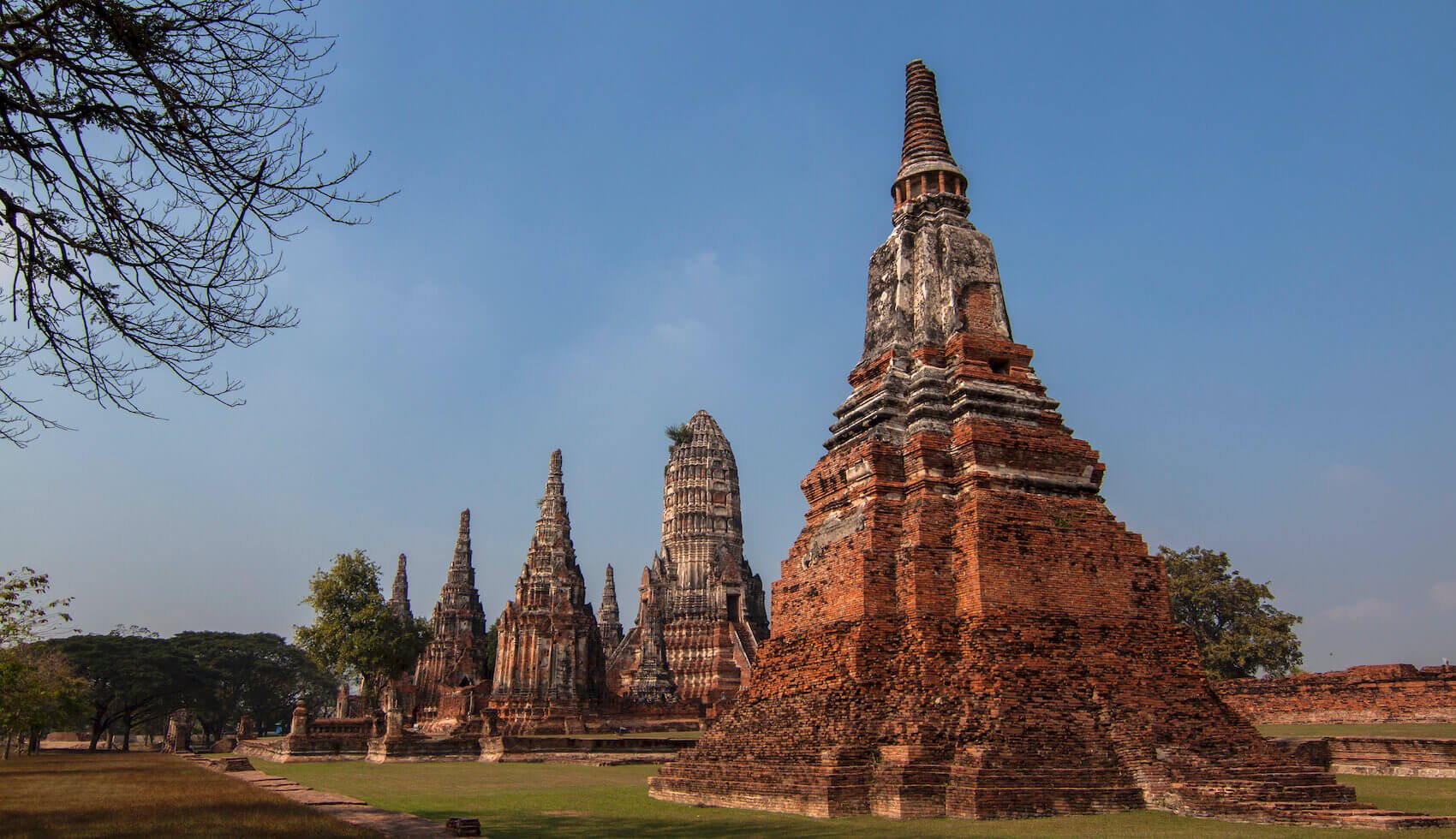
For Full Frame camera
For the choice of your wide angle at Nikon and Canon, for a Full Frame camera, you have multiple possibilities, but clearly you will have to pay the price! Here is a selection of the 6 models that I think are the most interesting!
| Brand | Model | Max. aperture | Filter | Price | Best price |
|---|---|---|---|---|---|
| Nikon | 18-35mm f/3.5-4.5G ED | f/3.5-4.5 | 77mm | 745$ | Amazon |
| Nikon | 16-35mm f/4G ED VR | f/4 | 77mm | 995$ | Amazon |
| Nikon | 14-24mm f/2.8G | f/2.8 | - | 1595$ | Amazon |
| Nikon | 20mm f/1.8 G ED | f/1.8 | 77mm | 720$ | Amazon |
| Canon | 16-35mm f/4.0 L IS USM | f/4 | 71mm | 1000$ | Amazon |
| Canon | 16-35mm f/2.8 L III USM | f/2.8 | 82mm | 1895$ | Amazon |
| Canon | 17-40mm f/4.0 L USM | f/4 | 77mm | 500$ | Amazon |
| Brand | Model | Max. aperture | Filter | Price | Best price |
|---|---|---|---|---|---|
| Tokina | 16-28mm f/2.8 | f/2.8 | - | 400$ | Amazon |
| Tokina | 17-35mm f/4 AT-X | f/4 | 82mm | 420$ | Amazon |
| Tamron | 15-30mm f/2.8 Di VC USD G2 | f/2.8 | - | 1200$ | Amazon |
| Tamron | 17-35mm f/2.8-4 Di OSD | f/2.8-4 | 77mm | 600$ | Amazon |
| Sigma | 14-24mm f/2.8 DG HSM Art | f/2.8 | - | 1200$ | Amazon |
| Sigma | 12-24mm f/4 DG HSM Art | f/4 | - | 1600$ | Amazon |
| Sigma | 14mm f/1.8 Art DG HS | f/1.8 | - | 1450$ | Amazon |
| Samyang | 14mm f/2.8 (MF) | f/2.8 | - | 250$ | Amazon |
| Irix | 15mm f/2.4 | f/2.4 | 95mm | 550$ | Amazon |
| Carl Zeiss | Milvus 15mm f/2.8 | f/2.8 | 95mm | 3000$ | Amazon |
| Carl Zeiss | Milvus 18mm f/2.8 | f/2.8 | 77mm | 2300$ | Amazon |
| Carl Zeiss | Milvus 21mm f/2.8 | f/2.8 | 82mm | 1900$ | Amazon |
| Carl Zeiss | 15mm f/2.8 Distagon | f/2.8 | 95mm | 1675$ | Amazon |
My opinion on the choice of a wide-angle lens for Full Frame
If you have a full frame DSLR or if you plan to buy one soon, the choice of a wide-angle lens is more complex than with an APS-C camera. For a Canon lens, several choices are possible, the most economical being the Canon 17-40mm f/4, still in the 700€ range. The lens is quite old but many still use it. For the price (for a Full Frame lens), this is a very nice lens to consider. You also have a fixed maximum aperture at f/4 which is okay. If you have a more solid budget, you can look at the 16-35mm, which exists either with a maximum aperture of f/4 or f/2.8. The price is almost twice as high between the two lenses. These are two very good lenses, but more expensive and heavier, perhaps to consider if you have to carry it over long distances. I considered getting the 16-35mm f/4 at one point, but I already have the focal length between 16mm and 24mm, which also bothered me a little. The f/2.8 version is too expensive for me. The Canon Rolls Royce wide-angle lens is the Canon 14mm f/2.8 L II. An ultra-bright lens with a very high price… Be careful, the front lens is also curved. This therefore requires a special filter system.
EDIT of 09/08/2019: I finally fell for with the Canon 16-35 f/4 in the summer of 2019. For now, it’s just happiness.
For Nikon, I may be less of a specialist, but I have the impression that a very good compromise for a wide-angle lens would be the Nikon 18-35 f/3.5-4.5. Of course, the maximum aperture is not crazy as such, but the lens is apparently very well-known and light compared to other Nikon wide angle monsters. Many recommend it to be able to travel light and at a “decent” price. However, it will be less suitable for indoor photos, concert photography, where an aperture of f/2.8 may be very interesting. For those with a larger budget, the best is the Nikon 14-24 mm f/2.8, but at a very high price. Everyone agrees that this is a magical lens, but it is expensive and heavy. Also pay attention to the curved front lens for filters. Finally, the Nikon AF-S 16-35 f/4 could be a middle ground with a fixed maximum aperture at f/4/.


Concerning wide-angle lenses from third-party brands, there is also plenty to enjoy. More and more, photographers are being tempted by Sigma, Tokina or Tamron lenses. I’ll start with the best of the best, which remains the Carl Zeiss wide-angle lenses. It’s heavy and very expensive, but the quality is apparently extraordinary. If I could afford it, I would have already bought the Carl Zeiss Distagon T* F2.8/15 mm. With a fixed aperture of f/2.8 and a 15mm, you can do literally anything. The sharpness is exceptional from the wide aperture and it is possible to add filters without worries. Be careful though because as with all Carl Zeiss, it’s a manual focus.
Sigma has also recently started building wide-angle lenses with the superb Sigma 12-24mm F4 DG HSM Art. I’m interested in this one in particular, with a nice short focal length and a f/4 maximum aperture. There is also a very nice version of this lens at f/2.8, which is apparently wonderful (but with a curved front element too). The only concern is the particular filter system with the curved front element, which would mean that I would have to change everything… If you are looking for a light wide angle for your full frame camera, you can also have a look at Tokina (Tokina AT-X PRO FX 16-28 mm f/2.8), which also has a curved lens. Based on testing and feedback, this is a very nice lens at a much lower price than the Nikon and Canon. Same on Tamron side with the 15-30mm F/2.8 Di VC USD G2 or the Tamron 17-35 f/2.8-4 Di OSD.
I deliberately wanted to talk about the possibilities of manual focus wide-angle lenses. If you have a small budget and are not bothered by manual focus, the Samyang 14mm f/2.8 remains a quality lens at a low price! In terms of quality wide-angle lenses at a “low price”, Irix also offers a 15mm f/2.4 for Canon, Nikon and Pentax cameras. An even wider version exists, the Irix 11mm f/4 which also has a good reputation for a very acceptable price (around 500/600$). For those who are looking for beautiful manual focus lenses (and more budget), Zeiss also offers three lenses: the Milvus 15mm f/2.8, the 18mm f/2.8 or the 21mm f/2.8. These lenses are available for both Canon bodies (ZE mount) and Nikon bodies (FZ.2 mount).
Wide-angle lenses for mirrorless cameras
I hadn’t planned to talk about mirrorless camera lenses when I wrote this article, but it seems to me that, given the growing popularity of these cameras today, I should mention them. So here’s a small addition (May 2020). I offer you my analysis to help you choose your wide-angle lens, other than the one you received in kit with your mirrorless camera of course!
I will work by type of sensor by offering you some options.
The following tables summarize the main features of the lenses I recommend. You have the possibility to sort these tables by clicking on the parameter you are interested in. Here are the summary tables for Micro 4/3 wide-angle lenses, wide-angle lenses for APS-C sensors and Full Frame lenses.
To go into more detail, you can check out our article on which Sony wide-angle lens to choose (for E-mount – mirrorless cameras).
For Micro 4/3 sensors (Panasonic / Olympus), I particularly recommend the 7-14mm f/4 or the 8-18mm f/2.8-4, both at less than 800€. Olympus offers a very nice 7-14mm f/2.8 lens, but more expensive considering the wide f/2.8 aperture. Also, from Olympus, and for those with a more restricted budget, you can choose the 9-18mm f/4-5.6 or the 12mm f/2 for around 500€. As for third-party brands, and always on a small budget, Samyang/Rokinon also offers a 10mm f/2.8 and a 12mm f/2.8 in manual focus.
| Brand | Model | Max. aperture | Focus | Weight | Filter | Best price |
|---|---|---|---|---|---|---|
| Panasonic | 7-14mm f/4 | f/4 | Auto | 300g | - | Amazon |
| Panasonic | 8-18mm f/2.8-4 | f/2.8-4 | Auto | 300g | 67mm | Amazon |
| Panasonic | 10-25mm f/1.7 | f/1.7 | Auto | 680g | 77mm | Amazon |
| Olympus | 7-14mm f/2.8 | f/2.8 | Auto | 534g | - | Amazon |
| Olympus | 9-18mm f/4-5.6 | f/4-5.6 | Auto | 155g | 52mm | Amazon |
| Olympus | 12mm f/2 | f/2 | Auto | 130g | 52mm | Amazon |
| Samyang | 10mm f/2.8 | f/2.8 | Manual | 600g | - | Amazon |
| Samyang | 12mm f/2 NCS CS | f/2.8 | Manual | 245g | 67mm | Amazon |
For APS-C sensors, several brands are available.
- At Sony, only the 10-18mm f/4 exists. If you don’t mind manual focusing, Samyang/Rokinon offers a 10mm f/2.8 / 12mm f/2 (manual focus) as well as Zeiss with a 12mm f/2.8 (with AF).
- At Fujifilm, there are two very nice references, one with a large aperture, the 8-16mm f/2.8, the other with a medium aperture, the 10-24mm f/4 (less bright, but cheaper). Among prime lenses, you can also check out the excellent Sigma DC DN Contemporary 16mm f/1.4, which provides the widest aperture, or (if you’re looking for something even wider, but with a lower quality), the Samyang AF 12mm f/2 Fuji. Samyang also offers three well-known manual focus lenses with large aperture: a 10mm f/2.8 (MF), a 12mm f/2 (MF) and a 14mm f/2.8 (MF). As with the Sony APS-C mirrorless cameras, Zeiss also offers a beautifully bright manual focus lens, the Zeiss 12mm f/2.8 Touit. Here is our complete guide to the best current Fujifilm wide-angle lenses.
- At Canon, only the 11-22mm f/4-5.6 is available for the moment. As for Fuji, Samyang also offers its 10mm f/2.8, 12mm f/2 and 14mm f/2.8, all three with manual focus. At Nikon, you won’t have a choice either, except for 16-50mm f/3.5-6.3. At the time of writing this article, to my knowledge, no third-party brand offers wide-angle lenses for the Nikon APS-C camera.
| Brand | Model | Max. aperture | Focus | Weight | Filter | Best price |
|---|---|---|---|---|---|---|
| Sony | 10-18mm f/4 | f/4 | Auto | 225g | 62mm | Amazon |
| Zeiss - Sony | 12mm f/2.8 Touit | f/2.8 | Auto | 260g | 67mm | Amazon |
| Samyang - Sony | 12mm f/2 | f/2 | Manual | 245g | 67mm | Amazon |
| Samyang - Sony | 10mm f/2.8 | f/2.8 | Manual | 600g | - | Amazon |
| Fujifilm | 8-16mm f/2.8 | f/2.8 | Auto | 800g | - | Amazon |
| Fujifilm | 10-24mm f/4 R OIS | f/4 | Auto | 780g | 72mm | Amazon |
| Samyang - Fujifilm | 10mm f/2.8 | f/2.8 | Manual | 600g | - | Amazon |
| Samyang - Fujifilm | 12mm f/2 | f/2 | Manual | 245g | 67mm | Amazon |
| Samyang - Fujifilm | 14mm f/2.8 | f/2.8 | Manual | 570g | - | Amazon |
| Zeiss - Fujifilm | 12mm f/2.8 Touit | f/2.8 | Auto | 260g | 67mm | Amazon |
| Canon | 11-22mm f/4-5.6 IS STM | f/4-5.6 | Auto | 220g | 55mm | Amazon |
| Samyang - Canon | 10mm f/2.8 | f/2.8 | Manual | 600g | - | Amazon |
| Samyang - Canon | 12mm f/2 | f/2 | Manual | 245g | 67mm | Amazon |
| Samyang - Canon | 14mm f/2.8 | f/2.8 | Manual | 570g | - | Amazon |
| Nikon | 16-50mm f/3.5-6.3 VR | f/3.5-6.3 | Auto | 135g | 46mm | Amazon |
For full frame sensors, there are also a lot of brands.
- At Sony in FF, the choice will be much broader. By sticking to the native brand, you will have the choice between a wide bright angle lens (heavier and more expensive), the 16-35mm f/2.8 or the 12-24mm f/4 (lighter and more affordable). Tamron offers an excellent and very well-known wide angle, the 17-28mm f/2.8 (for half the price of the Sony). You also have the possibility to look at the Sigma 14-24mm f/2.8. Finally, Rokinon offers two very good quality lenses with autofocus for Sony FE: the 14mm f/2.8 and the 18mm f/2.8. Finally, for those who are looking for nice quality wide-angle alternatives on a full frame Sony camera, Zeiss offers the Batis 18mm f/2.8, a nice bright lens with autofocus. For Zeiss fans, there is also the Loxia 21mm f/2.8 with manual focus and a very good reputation. Finally, still with manual focus, you can have a look at the Venus Laowa 15mm f/2 or the 12mm f/2.8 (with very good reputation too). Standard screw-in filters can be adapted on these last three lenses,
- Concerning wide angle lenses for Panasonic Full-frame cameras, I would advise you to look at Panasonic 16-35mm f/4 L or Sigma 14-24mm f/2.8 DG DN.
- For Canon full-frame bodies (EOS R and RP), only the Canon RF 15-35mm L IS f/2.8 is available from Canon. Samyang/Rokinon also offers a very nice alternative, the 14mm f/2.8 with autofocus,
- Finally, at Nikon (for the Z6 and Z7), you can look at the Z 14-30mm f/4 S. Samyang/Rokinon also offers a 14mm f/2.8 with manual focus for much less!
| Brand | Model | Max. aperture | Focus | Weight | Filter | Best Price |
|---|---|---|---|---|---|---|
| Sony | 16-35mm f/2.8 GM | f/2.8 | Auto | 680g | 82mm | Amazon |
| Sony Zeiss | 16-35mm f/4 | f/4 | Auto | 518g | 72mm | Amazon |
| Sony | 12-24mm f/4 G | f/4 | Auto | 560g | - | Amazon |
| Tamron - Sony | 17-28mm f/2.8 Di III RXD | f/2.8 | Auto | 420g | 67mm | Amazon |
| Sigma - Sony | 14-24mm f/2.8 DG DN Art | f/2.8 | Auto | 790g | - | Amazon |
| Sigma - Sony | 14mm f/1.8 | f/1.8 | Auto | 1170g | - | Amazon |
| Samyang - Sony | 14mm f/2.8 AF | f/2.8 | Auto | 450g | - | Amazon |
| Samyang - Sony | 18mm f/2.8 AF | f/2.8 | Auto | 145g | 58mm | Amazon |
| Zeiss - Sony | 18mm f/2.8 Batis | f/2.8 | Auto | 330g | 77mm | Amazon |
| Zeiss - Sony | 21mm f/2.8 Loxia | f/2.8 | Manual | 394g | 52mm | Amazon |
| Venus - Loawa | 15mm f/2 | f/2 | Manual | 500g | 72mm | Amazon |
| Venus - Loawa | 12mm f/2.8 | f/2.8 | Manual | 600g | 77mm | Amazon |
| Sigma - Panasonic | 14-24mm f/2.8 DG DN L | f/2.8 | Auto | 795g | - | Amazon |
| Panasonic | 16-35mm f/4 L | f/4 | Auto | 500g | 77mm | Amazon |
| Canon | RF 15-35mm f/2.8 L IS | f/2.8 | Auto | 840g | 82mm | Amazon |
| Samyang - Canon | 14mm f/2.8 AF RF | f/2.8 | Auto | 523g | - | Amazon |
| Nikon | Z 14-30mm f/4 S Z | f/4 | Auto | 485g | 82mm | Amazon |
| Samyang - Nikon | 14mm f/2.8 MF | f/2.8 | Manual | 810g | - | Amazon |
If you want to go further in your choice, since the time of writing this article, I switched to Sony on an A7III camera. I just bought and tested a new wide-angle lens. Here is my full review of the Tamron 20mm f/2.8.
I conclude this long article hoping that it has allowed you to understand wide-angle lenses better and that you now know which one to choose? If you have any questions about your options or would like some help, feel free to leave a comment at the bottom of the article. Do you want to know which lens to choose when traveling? Do you have what you need right now in your camera bag? For my part, I have: an ND filter, a polarizing filter, a photo tripod.
I wish you to choose well.

Written by Sylvain PONS
I've been passionate about photography since 2010, learning as I went along. Today, I dedicate myself to guiding others in their choice of camera gear and sharing a variety of tips to improve their photography skills.
Despite our care, a mistake may have slipped into this article. If you find any, please don't hesitate to let us know so we can correct it as soon as possible and keep our information up-to-date!





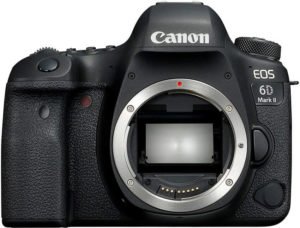

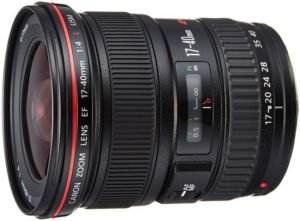


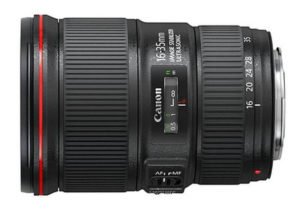







Is there a way with the right equipment (filter holder/ adaptor rings), to fit a circular polarizing filter onto a curved wide angle lense?
Yes as I told you by email it’s possible to use special filter holder for this kind of curved front element, usually 150mm or 180mm size.
Sylvain